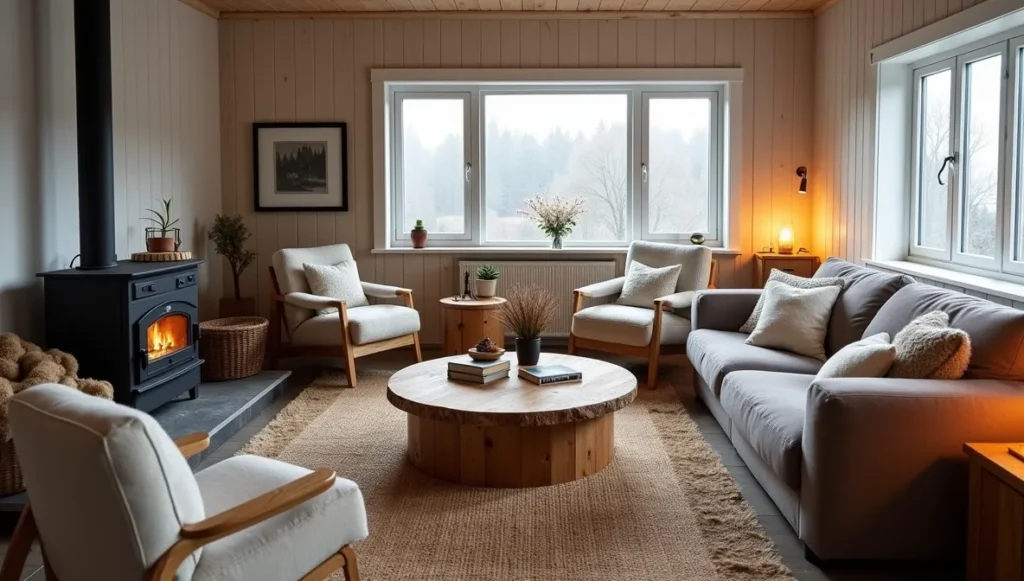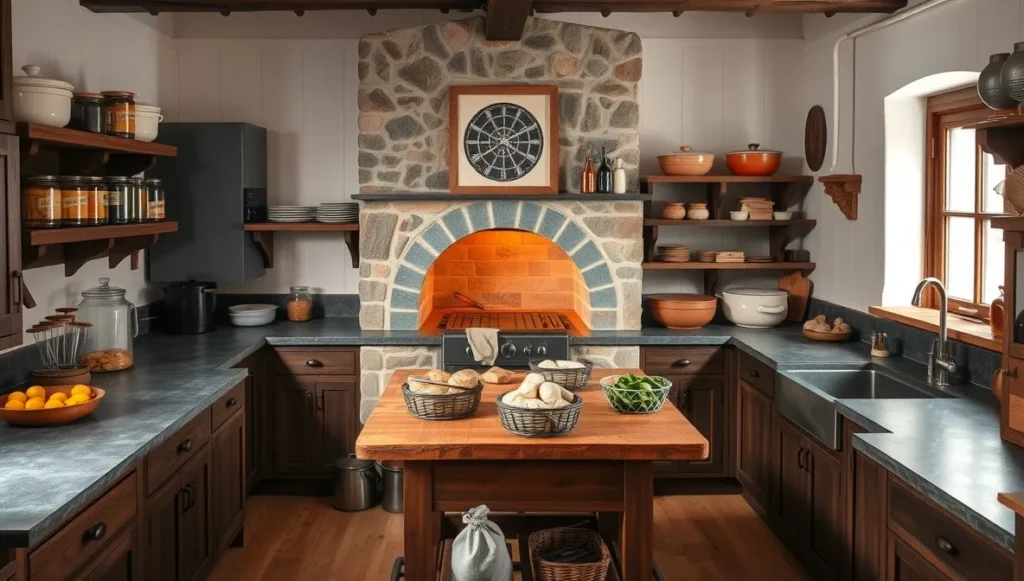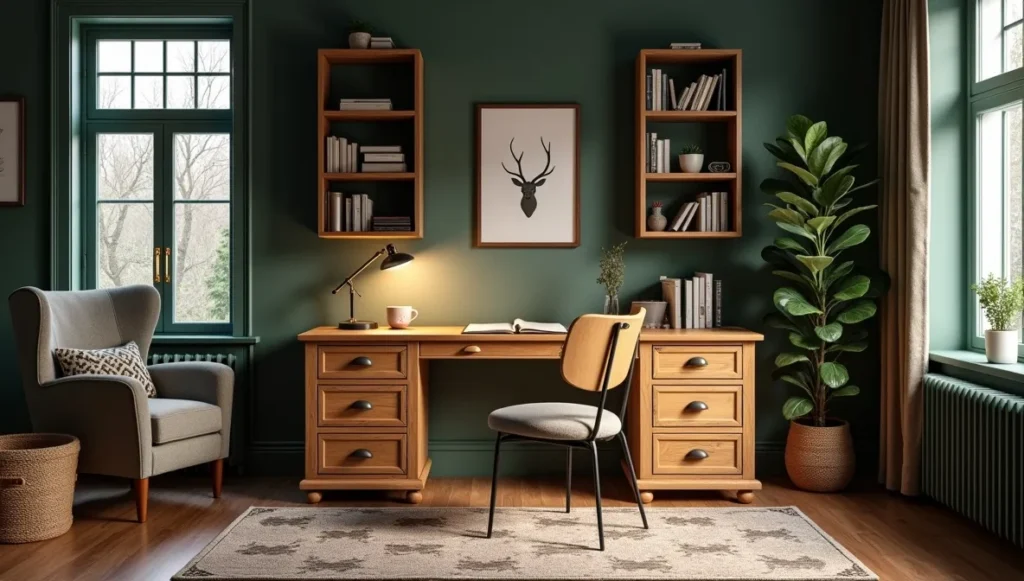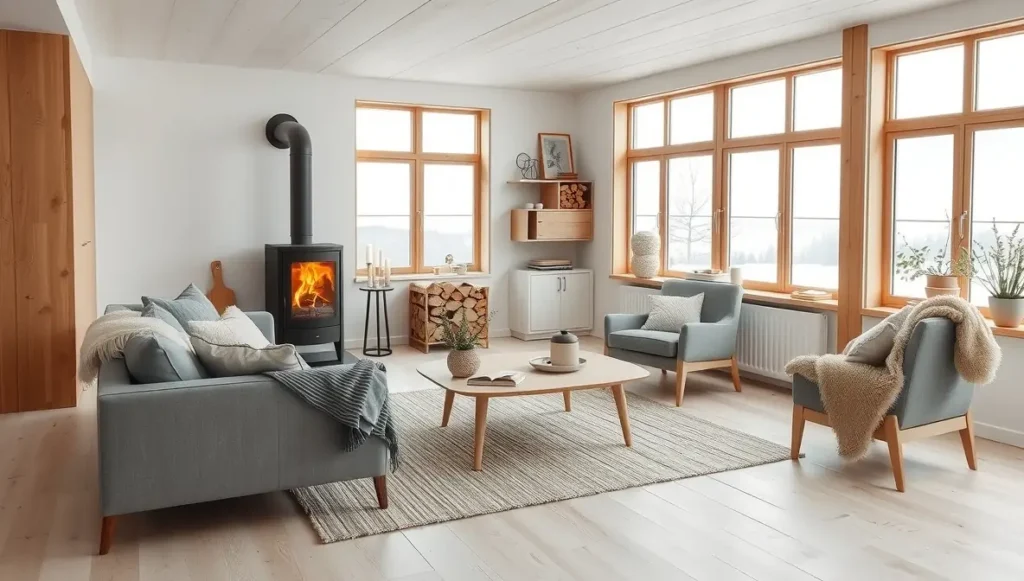- Bauhaus Interior Design: Why This 100-Year-Old Style Still Works Today - September 6, 2025
- Southwestern Interior Design: What I Wish I’d Known 20 Years Ago - September 6, 2025
- Why Norwegian Interior Design Actually Makes Your Home Feel Like Home - September 4, 2025
Table of Contents
Look, I’ll be honest with you. When clients first ask me about Norwegian interior design, half of them think it’s just “that IKEA look but more expensive.” Couldn’t be more wrong.
I’ve been inside probably 200+ Norwegian homes over the years – from tiny Bergen apartments to sprawling fjord-side houses – and there’s something different happening here. Something that makes you want to kick off your shoes and never leave.
Here’s What People Get Wrong About Scandinavian Design
Everyone lumps Norwegian, Danish, and Swedish design together. Big mistake.
Danish stuff? That’s your classic mid-century modern. Clean teak furniture, very “look but don’t touch.” Beautiful, sure, but kind of cold.
Swedish design? Think IKEA. Bright whites, practical storage, affordable everything. Great if you want your place to look like a magazine.
Norwegian design though… This is different. It’s what happens when you live somewhere that gets 4 hours of sunlight in winter and you still need to feel human.
We’re talking deep colors – not the bright whites everyone expects. Rich greens that remind you of pine forests. Charcoal grays like storm clouds. Browns that feel like tree bark under your fingers.
And the textures! Danish design is smooth and untouchable. Norwegian design begs you to run your hands over everything. Rough wool throws. Hand-carved wood that still shows chisel marks. Stone that feels ancient.
The Secret Sauce: Koselig (And Why It’s Better Than Hygge)
Denmark gets all the credit for “hygge” – that cozy contentment thing. But Norway has “koselig,” and honestly? It hits different. Hygge is about perfect moments – the right candle, the perfect cup of coffee, everything just so. Koselig is messier. It’s about surviving tough times together. It’s burning candles because the power might go out, not because they look cute on Instagram.
In Norwegian homes, I see candlesticks everywhere – not fancy ones, just practical holders scattered around like they actually get used. There are wool blankets draped over every chair because someone actually needs them. Plants growing in whatever containers work because bringing nature inside isn’t a design choice, it’s survival.

How This Actually Works Room by Room
Living Rooms That Actually Get Lived In
Forget pristine furniture arrangements. Norwegian living rooms center around heat sources – fireplaces, wood stoves, even radiators get furniture grouped around them.
The coffee table isn’t some delicate glass thing. It’s solid wood that can handle hot mugs, feet, board games, whatever life throws at it. Usually there’s storage inside because space matters when you’re stuck indoors for months.
Seating is deep and substantial. Not those skinny Danish chairs that look great but kill your back after 20 minutes. We’re talking furniture you can curl up in with three blankets and a book.

Kitchens Built for Real Cooking
Norwegian kitchens assume you actually cook. Like, from scratch. Because historically, you had to.
Cabinets are wood – real wood, not painted white everything. Usually darker stains that hide the inevitable dings and scratches from daily use. Countertops are stone or granite because they can handle anything.
I always include serious storage for bulk ingredients, big pots, canning supplies. These aren’t kitchens for heating up takeout – they’re built for preserving summer vegetables and baking bread when the stores are closed.
One client wanted that traditional bread oven alcove I’d seen in rural Norwegian houses. Thought she’d never use it. Now she bakes every weekend and says it’s her favorite kitchen feature.

Dining Rooms That Bring People Together
Norwegian dining rooms understand something most people miss – meals aren’t performances, they’re survival. The table is always solid wood – pine or oak that’s built for daily use. Extendable because Norwegian hospitality means there’s always room for one more person. Chairs have substance – curved backs, maybe thin cushions, comfortable enough for three-hour conversations.
Lighting is a single pendant hung low over the table. Creates intimacy without being harsh. Storage is practical – built-in hutches for dishes and linens, but also everyday items because this room gets used daily.
One couple replaced their glass table with reclaimed barn wood and added a copper pendant. Now they eat breakfast there every morning instead of standing at the counter.

Bedrooms That Prioritize Sleep
Norwegian bedrooms understand something most designers miss – sometimes you need to hide from the world.
Beds are substantial. Heavy wood frames that don’t squeak or wobble. Built-in storage underneath because where else are you putting your winter clothes in a small space?
Window treatments actually block light. In summer, you might get midnight sun. In winter, streetlights mess with your sleep. Blackout curtains aren’t optional – they’re survival gear.
Colors tend toward darker, more restful tones. That sage green I painted one client’s bedroom? She says it’s like sleeping in a forest cabin, even in downtown Seattle.

Bathrooms That Make Sense
Norwegian bathrooms acknowledge that bathing is about more than getting clean – it’s therapy.
Stone everywhere because it handles moisture and looks better with age. Wooden vanities that develop character over time instead of looking worse.
Heated towel racks aren’t luxury items – they’re necessities when your bathroom might actually be cold. Same with that little wooden stool I always include. Perfect for candles during long winter baths.

Home Offices That Don’t Feel Like Cubicles
Norwegian offices feel like old library studies – places where thinking happens naturally. The desk is real wood – solid pine or oak that develops character over time. Scratches and coffee stains become part of the story. Lighting layers with a desk lamp for work plus ambient table lamps. No harsh overhead fluorescents.
Storage is built for actual work – deep drawers, book shelves, coat hooks. Always include a reading chair separate from the desk. Colors are those same forest tones – deep greens or warm grays that calm instead of energize.
One writer switched from sterile white walls to charcoal gray. Said her creativity improved because the space stopped fighting against her and started supporting her work.

Why This Style Actually Works Better
Here’s what I’ve noticed after 15 years of this work. Clients with Norwegian-inspired homes call me less.
Not because they’re unhappy – because their spaces actually function. The furniture holds up. The storage systems work. The lighting makes them feel better instead of just looking pretty.
There’s something psychologically different about being surrounded by materials that feel substantial. When your coffee table is solid pine instead of particle board, when your blanket is actual wool instead of synthetic fleece – your nervous system notices.
I had one client tell me her Norwegian-style living room helped her through a difficult divorce. Not because it was perfectly designed, but because it felt strong enough to hold her pain. That’s when I knew this style was about more than aesthetics.
Getting Started Without Breaking the Bank
You don’t need to gut your whole house. Start with one piece that matters.
Maybe it’s swapping your glass coffee table for a solid wood one. Or replacing those polyester throw pillows with wool ones that actually keep you warm.
Lighting makes the biggest difference for the least money. Swap harsh overhead bulbs for warm table lamps. Buy real candles instead of those fake LED ones. Your space will immediately feel more Norwegian.
Paint can transform everything. Try that deep forest green on one accent wall. Suddenly your room has the drama Norwegian interiors are known for.
And textures – this is where you can really experiment without commitment. A sheepskin rug. A chunky knit throw. A wooden bowl for your fruit. These aren’t expensive changes, but they shift the whole feeling of a room.
The Real Point
Norwegian interior design isn’t about creating perfect Instagram moments. It’s about building spaces that support real life – the messy, difficult, beautiful parts of being human.
When I finish a Norwegian-inspired project, I don’t just hand over the keys and leave. These clients become friends. They invite me back for dinner parties, to see how the space evolved, to meet their kids who’ve grown up in these rooms.
That’s the real test of good design – not how it photographs, but how it lives. Norwegian style passes that test every time.
